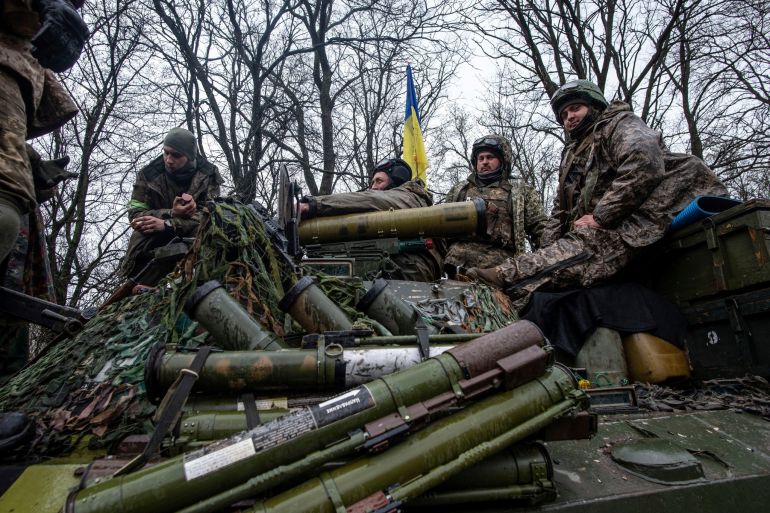US begins training Ukrainians on howitzer artillery: Official
Senior US defence official says howitzer training of a few dozen Ukrainian forces has begun outside of the country.

A small number of Ukrainian forces have begun US training on howitzer artillery systems, a senior United States defence official said, as Ukraine continues to call for more weapons to respond to a Russian offensive in the east of the country.
Speaking on condition of anonymity on Wednesday, the US official said the howitzer training was taking place outside Ukraine and would take about one week.
Keep reading
list of 3 itemsThe weapons being sent to Ukraine and why they may not be enough
US, European allies pledge weapons for Kyiv amid Russian advance
“It’s a smallish number of Ukrainians, a little bit more than 50,” the official said, as reported by the Reuters news agency.
The 155mm howitzer cannons are part of an $800m weapons package the Biden administration announced last week that also includes armoured personnel carriers, helicopters and tens of thousands of artillery rounds.
US President Joe Biden had said the weapons aimed to help bolster Ukrainian forces against the Russian military’s push into the eastern Donbas region, which began on Monday.
On Tuesday, Biden spoke with US allies in Europe and elsewhere about Moscow’s eastern offensive, with some pledging to provide more weapons, including artillery, to Kyiv and to “tighten” sanctions against the Russian government.
Al Jazeera’s Kimberly Halkett, reporting from Washington, said some reporters have raised questions in recent days “about the concern that Ukraine is running dangerously low on ammunition” and the need to re-up supplies.
Halkett said the Biden administration was expected to announce another weapons package for Ukraine “imminently”.
“What will this package look like? The details have not been revealed,” she said. “What we do know is that the US considers this to be vital assistance for Ukraine to defend its sovereignty.”
Biden is meeting with US Secretary of Defense Lloyd Austin and other top US military leaders, including General Mark Milley, the chairman of the Joint Chiefs of Staff, later on Wednesday.
The US military will be delivering additional equipment to Ukraine in the coming days, White House press secretary Jen Psaki told reporters. Five US cargo flights arrived in the region in the last few days and more than half a dozen are scheduled shortly, Psaki said.
“We have been working with Ukrainians and the Ukrainian military to determine exactly the kind of security assistance they need for this stage in the war,” she said. “That has included an increase – as you’ve seen – in artillery and ammunition.”
A day earlier, Pentagon spokesman John Kirby had said US weapons packages are the result of conversations with Ukrainians “about what they need and what we can provide”.
“We’ve got to make sure that we’re helping [Ukraine] in the most effective way and we believe we are,” Kirby told reporters. “And we’ll see what … future packages look like. But I guarantee, whatever they look like, they’re going to be tailored based on the Ukrainians’ needs, in the moment, and what … they most require.”
Harry Nedelcu, a policy director at political consultancy firm Rasmussen Global, told Al Jazeera that Washington’s latest package of military support for Kyiv is “very significant”.
“It shows a stark shift from Western support for Ukraine, one that is focused now on delivering heavy weaponry and not only defensive systems like anti-tank rockets,” Nedelcu said, adding that the arms “could make a lot of difference” as the focus of the war shifts to Ukraine’s Donbas region.
“This is flat land which requires heavy weaponry, such as howitzers and tanks, and this is what this package is tailored towards,” Nedelcu said.
Russia has warned the US against supplying further weapons to Ukraine, saying in a diplomatic note last week that US and NATO shipments of weapons systems could bring “unpredictable consequences”.